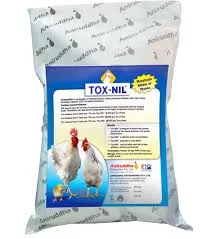
Дек . 04, 2024 09:48 Back to list
Combination of Norfloxacin, Tinidazole, and Lactic Acid Bacillus for Enhanced Antibacterial Effects
Exploring the Synergistic Effects of Norfloxacin, Tinidazole, and Lactic Acid Bacillus in Gastrointestinal Health
The health of our gastrointestinal system is paramount to our overall well-being. In recent years, a combination of antibiotics and probiotics has gained attention for their potential benefits in treating gut-related ailments. This article explores the combined effects of Norfloxacin, Tinidazole, and Lactic Acid Bacillus (LAB), shedding light on their individual properties and the synergistic potential when used together.
Norfloxacin A Broad-Spectrum Antibiotic
Norfloxacin is a synthetic fluoroquinolone antibiotic primarily used to treat infections caused by gram-negative bacteria. It works by inhibiting bacterial DNA gyrase and topoisomerase IV, thereby preventing DNA replication and bacterial growth. This medication is particularly effective in treating urinary tract infections, bacterial gastroenteritis, and other infections. However, its use is not without risks; common side effects include gastrointestinal disturbances, tendinopathy, and potential development of antibiotic resistance.
Tinidazole The Antimicrobial Agent
Tinidazole is an antiprotozoal medication primarily used to treat infections caused by protozoa such as Trichomonas vaginalis and Giardia lamblia, as well as certain bacterial infections, including those caused by anaerobic bacteria. Like Norfloxacin, Tinidazole has significant antimicrobial properties but operates through a different mechanism—producing reactive metabolites that damage the DNA of harmful microorganisms. It is praised for its robust effect and shorter treatment duration compared to similar medications, such as metronidazole. However, adverse effects can occur, including nausea, headache, and, in rare cases, allergic reactions.
Lactic Acid Bacillus The Probiotic Hero
In contrast to the antibiotics, Lactic Acid Bacillus represents a class of probiotics that promote gut health. These beneficial bacteria contribute to maintaining a balanced gut microbiota, aiding in digestion, and enhancing the immune response. LAB can also help combat antibiotic-associated diarrhea, a common side effect of antibiotics, by restoring the natural flora of the intestines. They produce lactic acid and other metabolites that inhibit the growth of pathogenic bacteria and enhance nutrient absorption.
china norfloxacin tinidazole and lactic acid bacillus

The Synergy of Antibiotics and Probiotics
The combination of Norfloxacin and Tinidazole with Lactic Acid Bacillus raises interesting considerations in the context of treatment regimens. The introduction of probiotics, such as LAB, during or after antibiotic therapy can mitigate some of the adverse effects commonly associated with antibiotic use, particularly concerning gut microbiota imbalance.
Research has shown that administering probiotics alongside antibiotics can reduce the incidence of antibiotic-associated diarrhea, restore gut microbiota diversity, and enhance the overall efficacy of the treatment. By supporting the recovery of gut flora, LAB can pave the way for better nutrient absorption and improved immune function.
Application in Clinical Settings
In clinical settings, the combined use of Norfloxacin and Tinidazole, enhanced with Lactic Acid Bacillus, could present an effective therapeutic strategy for tackling gastrointestinal infections, particularly those involving multi-drug resistant organisms. This approach not only targets the pathogens directly but also supports the body’s natural defenses through the replenishment of healthy gut bacteria.
However, the success of this combined therapy hinges on careful management, including appropriate dosing regimens and timing of administration. To maximize benefits, practitioners must consider individual patient profiles, potential interactions, and the specific nature of the infection being treated.
Conclusion
The integration of antibiotics and probiotics in digestive health is a promising field of study with significant potential. The combined use of Norfloxacin, Tinidazole, and Lactic Acid Bacillus could offer a multifaceted approach to treating gastrointestinal infections while promoting a healthy microbiome. Future research, including well-designed clinical trials, will be crucial in further elucidating the benefits and potential limitations of this therapeutic combination, ultimately paving the way for more effective and holistic treatment strategies in gastroenterology.
-
High-Quality Blisters Manufacturer & Supplier Reliable Blisters Factory
NewsJul.07,2025
-
High-Quality Skeleton Development Services Leading Factory, Manufacturer & Supplier
NewsJul.07,2025
-
High-Quality Cockscomb Turns White Reliable Manufacturer & Supplier Factory
NewsJul.07,2025
-
Premium Suckling Piglet for Sale - Trusted Manufacturers & Suppliers Factory Price
NewsJul.06,2025
-
Premium Adolescent Chicken Supplier & Manufacturer Leading Adolescent Chicken Factory
NewsJul.06,2025
-
Premium Liquid-Postbiotic Leading Manufacturer, Supplier, and Factory Solutions
NewsJul.06,2025




